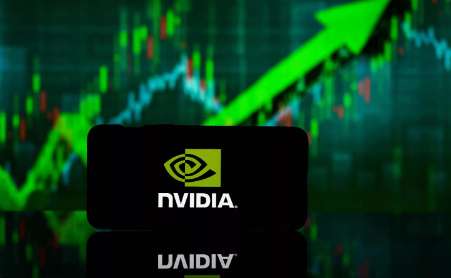The Night Shift: How Data Feeds Are Powering the Rise of Overnight Trading
The global financial markets are on the cusp of a transformation. Once confined to traditional trading hours, investors are now emboldened to trade around the clock—thanks to a quiet yet profound shift in the infrastructure underpinning global markets. The push to extend real-time data feeds, paired with initiatives like Hong Kong Exchanges and Clearing Limited’s (HKEX) round-the-clock derivatives platform, is redefining how, when, and where trading happens. This article explores how data is becoming the lifeblood of overnight trading—and why investors should take note.
The Data Feed Expansion: Building the Infrastructure for Always-On Trading
At the heart of this shift is the expansion of data feeds, which are no longer just tools for daytime traders. By 2025, these feeds will cover 50 major cryptocurrencies, ESG metrics from firms like msci, and real-time sentiment analysis from social media and news outlets. For institutional investors, this means access to granular data on everything from geopolitical risks to commodity flows—data that can be acted on instantly, even outside traditional hours.
The technical underpinnings are equally critical. HKEX’s Orion Derivatives Platform (ODP), set to launch in phases, will process trades in real time, while APIs compliant with ISO 20022 standards ensure seamless cross-border transactions. Meanwhile, cloud migration to AWS and Azure Government by 2024 will bolster security and scalability. This infrastructure isn’t just about speed—it’s about reliability, with a 99.99% uptime guarantee.
HKEX’s stock (00388.HK) has risen 18% year-to-date, reflecting investor confidence in its role as a “superconnector” of global markets.
The Overnight Trading Revolution: HKEX Leads the Charge
HKEX’s initiatives are a masterclass in adapting to a 24/7 world. Its Severe Weather Trading (SWT) framework, launched in late 2024, allows markets to stay open even during typhoons—a first for Asia. This isn’t just about weather resilience; it’s a proof-of-concept for infrastructure that can support round-the-clock trading. By mid-2025, HKEX aims to transition to a T+1 stock settlement cycle, aligning with global norms and reducing settlement delays—a boon for overnight liquidity.
The HKEX Data Marketplace, launched in 2024, further underscores this shift. By offering historical market data to global investors, it’s democratizing access to tools once reserved for institutional players. Meanwhile, the London Metal Exchange’s LMEselect v10 platform, now part of HKEX, is set to enhance commodity data transparency, enabling traders to act on overnight price movements in copper or aluminum.
The Asia-Pacific Edge: Infrastructure and Regulation Fuel Growth
The Asia-Pacific region is at the vanguard of this change. Intercontinental Exchange (ICE) has invested heavily in ultra-low-latency networks connecting Shanghai, Hong Kong, and Tokyo, slashing data transmission times to milliseconds. This infrastructure is a lifeline for high-frequency traders (HFT) in China, who now capitalize on arbitrage opportunities between yuan-denominated crude oil futures and global benchmarks.
Date | Interval Average Trading Volume(Share) | Interval Average Trading Volume YoY% |
|---|---|---|
| 20240401 | -- | -9.74 |
| 20240401-20250331 | 840.46K | -- |
| 20240403 | -- | 69.54 |
| 20240404 | -- | 69.02 |
| 20240405 | -- | 44.52 |
| 20240408 | -- | 32.15 |
| 20240410 | -- | -11.24 |
| 20240411 | -- | 42.84 |
| 20240412 | -- | 95.44 |
| 20240415 | -- | 26.56 |
| 20240417 | -- | 46.69 |
| 20240418 | -- | 48.68 |
| 20240419 | -- | 80.21 |
| 20240422 | -- | 64.92 |
| 20240424 | -- | -2.70 |
| 20240425 | -- | 22.31 |
| 20240426 | -- | -24.17 |
| 20240429 | -- | 7.91 |
| 20240501 | -- | -20.15 |
| 20240502 | -- | 73.89 |
| 20240503 | -- | 72.32 |
| 20240506 | -- | 1.75 |
| 20240508 | -- | 7.04 |
| 20240509 | -- | 17.63 |
| 20240510 | -- | -26.95 |
| 20240513 | -- | -20.08 |
| 20240515 | -- | 27.09 |
| 20240516 | -- | 38.29 |
| 20240517 | -- | -10.65 |
| 20240520 | -- | -36.00 |
| 20240522 | -- | 15.43 |
| 20240523 | -- | -0.86 |
| 20240524 | -- | 1.15 |
| 20240528 | -- | 59.69 |
| 20240530 | -- | -20.22 |
| 20240531 | -- | 42.26 |
| 20240603 | -- | 2.88 |
| 20240605 | -- | -2.20 |
| 20240606 | -- | 29.45 |
| 20240607 | -- | -20.25 |
| 20240610 | -- | -28.14 |
| 20240612 | -- | 24.30 |
| 20240613 | -- | -1.33 |
| 20240614 | -- | -26.66 |
| 20240617 | -- | -44.91 |
| 20240620 | -- | 2.78 |
| 20240621 | -- | 100.87 |
| 20240624 | -- | -3.94 |
| 20240626 | -- | 152.36 |
| 20240627 | -- | 57.13 |
| 20240628 | -- | 311.15 |
| 20240701 | -- | 3.88 |
| 20240703 | -- | 41.77 |
| 20240705 | -- | 21.54 |
| 20240708 | -- | 61.58 |
| 20240710 | -- | 76.31 |
| 20240711 | -- | 38.03 |
| 20240712 | -- | 28.18 |
| 20240715 | -- | -8.85 |
| 20240717 | -- | 101.92 |
| 20240718 | -- | 59.67 |
| 20240719 | -- | 75.73 |
| 20240722 | -- | 65.89 |
| 20240724 | -- | 57.41 |
| 20240725 | -- | 153.33 |
| 20240726 | -- | 46.21 |
| 20240729 | -- | -17.89 |
| 20240731 | -- | 0.31 |
| 20240801 | -- | 33.95 |
| 20240802 | -- | 148.41 |
| 20240805 | -- | 36.15 |
| 20240807 | -- | 213.64 |
| 20240808 | -- | 158.27 |
| 20240809 | -- | 61.68 |
| 20240812 | -- | -51.36 |
| 20240814 | -- | 33.72 |
| 20240815 | -- | 94.69 |
| 20240816 | -- | 46.75 |
| 20240819 | -- | -40.78 |
| 20240821 | -- | 9.06 |
| 20240822 | -- | 22.65 |
| 20240823 | -- | 49.19 |
| 20240826 | -- | -1.44 |
| 20240828 | -- | 87.87 |
| 20240829 | -- | 55.70 |
| 20240830 | -- | 56.87 |
| 20240903 | -- | 157.55 |
| 20240905 | -- | 62.30 |
| 20240906 | -- | 22.43 |
| 20240909 | -- | 70.53 |
| 20240911 | -- | 78.48 |
| 20240912 | -- | 14.14 |
| 20240913 | -- | -56.83 |
| 20240916 | -- | -64.11 |
| 20240918 | -- | 23.96 |
| 20240919 | -- | -46.83 |
| 20240920 | -- | 170.92 |
| 20240923 | -- | -20.95 |
| 20240925 | -- | 6.45 |
| 20240926 | -- | -26.04 |
| 20240927 | -- | 33.92 |
| 20240930 | -- | -0.26 |
| 20241002 | -- | 7.32 |
| 20241003 | -- | 59.64 |
| 20241004 | -- | -21.35 |
| 20241007 | -- | 1.73 |
| 20241009 | -- | 54.06 |
| 20241010 | -- | -13.00 |
| 20241011 | -- | -30.05 |
| 20241014 | -- | -31.33 |
| 20241016 | -- | -7.36 |
| 20241017 | -- | -9.81 |
| 20241018 | -- | -6.22 |
| 20241021 | -- | -14.80 |
| 20241023 | -- | 21.71 |
| 20241024 | -- | -27.06 |
| 20241025 | -- | -27.54 |
| 20241028 | -- | -33.42 |
| 20241030 | -- | 3.34 |
| 20241031 | -- | 229.97 |
| 20241101 | -- | 71.44 |
| 20241104 | -- | -45.45 |
| 20241106 | -- | 84.22 |
| 20241107 | -- | 8.67 |
| 20241108 | -- | 251.26 |
| 20241111 | -- | 80.01 |
| 20241113 | -- | 25.87 |
| 20241114 | -- | -50.51 |
| 20241115 | -- | 36.84 |
| 20241118 | -- | 47.99 |
| 20241120 | -- | -4.36 |
| 20241121 | -- | 16.17 |
| 20241122 | -- | 14.01 |
| 20241125 | -- | 856.59 |
| 20241127 | -- | 108.06 |
| 20241129 | -- | -41.62 |
| 20241202 | -- | -45.62 |
| 20241204 | -- | -5.64 |
| 20241205 | -- | 12.37 |
| 20241206 | -- | -27.97 |
| 20241209 | -- | 6.27 |
| 20241211 | -- | -34.96 |
| 20241212 | -- | -19.66 |
| 20241213 | -- | -53.56 |
| 20241216 | -- | -48.16 |
| 20241218 | -- | 78.58 |
| 20241219 | -- | 66.61 |
| 20241220 | -- | 143.78 |
| 20241223 | -- | 112.70 |
| 20241226 | -- | 46.78 |
| 20241227 | -- | 0.23 |
| 20241230 | -- | 24.21 |
| 20250102 | -- | -14.13 |
| 20250103 | -- | -34.32 |
| 20250106 | -- | -7.50 |
| 20250108 | -- | -8.55 |
| 20250110 | -- | 43.57 |
| 20250113 | -- | 24.41 |
| 20250116 | -- | -54.88 |
| 20250117 | -- | -39.21 |
| 20250121 | -- | 61.69 |
| 20250122 | -- | -1.33 |
| 20250123 | -- | -9.37 |
| 20250124 | -- | 14.06 |
| 20250127 | -- | 88.33 |
| 20250129 | -- | -48.86 |
| 20250130 | -- | -43.54 |
| 20250131 | -- | -34.70 |
| 20250203 | -- | -35.00 |
| 20250205 | -- | -5.70 |
| 20250206 | -- | 79.74 |
| 20250207 | -- | 24.19 |
| 20250210 | -- | 48.02 |
| 20250212 | -- | 56.64 |
| 20250213 | -- | 3.78 |
| 20250214 | -- | 16.83 |
| 20250218 | -- | 37.49 |
| 20250220 | -- | -65.48 |
| 20250221 | -- | -21.90 |
| 20250224 | -- | -38.11 |
| 20250226 | -- | 78.42 |
| 20250227 | -- | 14.08 |
| 20250228 | -- | 74.29 |
| 20250303 | -- | -18.68 |
| 20250304 | -- | -36.64 |
| 20250305 | -- | -18.38 |
| 20250306 | -- | 47.59 |
| 20250307 | -- | -38.28 |
| 20250310 | -- | 9.94 |
| 20250311 | -- | 57.67 |
| 20250312 | -- | 7.83 |
| 20250313 | -- | 14.59 |
| 20250314 | -- | -23.61 |
| 20250317 | -- | -46.70 |
| 20250318 | -- | -4.34 |
| 20250319 | -- | -11.58 |
| 20250320 | -- | -9.00 |
| 20250321 | -- | 76.17 |
| 20250324 | -- | 36.92 |
| 20250325 | -- | -1.59 |
| 20250326 | -- | -30.25 |
| 20250327 | -- | -11.31 |
| 20250328 | -- | -12.25 |
Name |
|---|
| Cboe Global MarketsCBOE |
| Cboe Global MarketsCBOE |
| Cboe Global MarketsCBOE |
| Cboe Global MarketsCBOE |
| Cboe Global MarketsCBOE |
| Cboe Global MarketsCBOE |
| Cboe Global MarketsCBOE |
| Cboe Global MarketsCBOE |
| Cboe Global MarketsCBOE |
| Cboe Global MarketsCBOE |
| Cboe Global MarketsCBOE |
| Cboe Global MarketsCBOE |
| Cboe Global MarketsCBOE |
| Cboe Global MarketsCBOE |
| Cboe Global MarketsCBOE |
| Cboe Global MarketsCBOE |
| Cboe Global MarketsCBOE |
| Cboe Global MarketsCBOE |
| Cboe Global MarketsCBOE |
| Cboe Global MarketsCBOE |
| Cboe Global MarketsCBOE |
| Cboe Global MarketsCBOE |
| Cboe Global MarketsCBOE |
| Cboe Global MarketsCBOE |
| Cboe Global MarketsCBOE |
| Cboe Global MarketsCBOE |
| Cboe Global MarketsCBOE |
| Cboe Global MarketsCBOE |
| Cboe Global MarketsCBOE |
| Cboe Global MarketsCBOE |
| Cboe Global MarketsCBOE |
| Cboe Global MarketsCBOE |
| Cboe Global MarketsCBOE |
| Cboe Global MarketsCBOE |
| Cboe Global MarketsCBOE |
| Cboe Global MarketsCBOE |
| Cboe Global MarketsCBOE |
| Cboe Global MarketsCBOE |
| Cboe Global MarketsCBOE |
| Cboe Global MarketsCBOE |
| Cboe Global MarketsCBOE |
| Cboe Global MarketsCBOE |
| Cboe Global MarketsCBOE |
| Cboe Global MarketsCBOE |
| Cboe Global MarketsCBOE |
| Cboe Global MarketsCBOE |
| Cboe Global MarketsCBOE |
| Cboe Global MarketsCBOE |
| Cboe Global MarketsCBOE |
| Cboe Global MarketsCBOE |
| Cboe Global MarketsCBOE |
| Cboe Global MarketsCBOE |
| Cboe Global MarketsCBOE |
| Cboe Global MarketsCBOE |
| Cboe Global MarketsCBOE |
| Cboe Global MarketsCBOE |
| Cboe Global MarketsCBOE |
| Cboe Global MarketsCBOE |
| Cboe Global MarketsCBOE |
| Cboe Global MarketsCBOE |
| Cboe Global MarketsCBOE |
| Cboe Global MarketsCBOE |
| Cboe Global MarketsCBOE |
| Cboe Global MarketsCBOE |
| Cboe Global MarketsCBOE |
| Cboe Global MarketsCBOE |
| Cboe Global MarketsCBOE |
| Cboe Global MarketsCBOE |
| Cboe Global MarketsCBOE |
| Cboe Global MarketsCBOE |
| Cboe Global MarketsCBOE |
| Cboe Global MarketsCBOE |
| Cboe Global MarketsCBOE |
| Cboe Global MarketsCBOE |
| Cboe Global MarketsCBOE |
| Cboe Global MarketsCBOE |
| Cboe Global MarketsCBOE |
| Cboe Global MarketsCBOE |
| Cboe Global MarketsCBOE |
| Cboe Global MarketsCBOE |
| Cboe Global MarketsCBOE |
| Cboe Global MarketsCBOE |
| Cboe Global MarketsCBOE |
| Cboe Global MarketsCBOE |
| Cboe Global MarketsCBOE |
| Cboe Global MarketsCBOE |
| Cboe Global MarketsCBOE |
| Cboe Global MarketsCBOE |
| Cboe Global MarketsCBOE |
| Cboe Global MarketsCBOE |
| Cboe Global MarketsCBOE |
| Cboe Global MarketsCBOE |
| Cboe Global MarketsCBOE |
| Cboe Global MarketsCBOE |
| Cboe Global MarketsCBOE |
| Cboe Global MarketsCBOE |
| Cboe Global MarketsCBOE |
| Cboe Global MarketsCBOE |
| Cboe Global MarketsCBOE |
| Cboe Global MarketsCBOE |
| Cboe Global MarketsCBOE |
| Cboe Global MarketsCBOE |
| Cboe Global MarketsCBOE |
| Cboe Global MarketsCBOE |
| Cboe Global MarketsCBOE |
| Cboe Global MarketsCBOE |
| Cboe Global MarketsCBOE |
| Cboe Global MarketsCBOE |
| Cboe Global MarketsCBOE |
| Cboe Global MarketsCBOE |
| Cboe Global MarketsCBOE |
| Cboe Global MarketsCBOE |
| Cboe Global MarketsCBOE |
| Cboe Global MarketsCBOE |
| Cboe Global MarketsCBOE |
| Cboe Global MarketsCBOE |
| Cboe Global MarketsCBOE |
| Cboe Global MarketsCBOE |
| Cboe Global MarketsCBOE |
| Cboe Global MarketsCBOE |
| Cboe Global MarketsCBOE |
| Cboe Global MarketsCBOE |
| Cboe Global MarketsCBOE |
| Cboe Global MarketsCBOE |
| Cboe Global MarketsCBOE |
| Cboe Global MarketsCBOE |
| Cboe Global MarketsCBOE |
| Cboe Global MarketsCBOE |
| Cboe Global MarketsCBOE |
| Cboe Global MarketsCBOE |
| Cboe Global MarketsCBOE |
| Cboe Global MarketsCBOE |
| Cboe Global MarketsCBOE |
| Cboe Global MarketsCBOE |
| Cboe Global MarketsCBOE |
| Cboe Global MarketsCBOE |
| Cboe Global MarketsCBOE |
| Cboe Global MarketsCBOE |
| Cboe Global MarketsCBOE |
| Cboe Global MarketsCBOE |
| Cboe Global MarketsCBOE |
| Cboe Global MarketsCBOE |
| Cboe Global MarketsCBOE |
| Cboe Global MarketsCBOE |
| Cboe Global MarketsCBOE |
| Cboe Global MarketsCBOE |
| Cboe Global MarketsCBOE |
| Cboe Global MarketsCBOE |
| Cboe Global MarketsCBOE |
| Cboe Global MarketsCBOE |
| Cboe Global MarketsCBOE |
| Cboe Global MarketsCBOE |
| Cboe Global MarketsCBOE |
| Cboe Global MarketsCBOE |
| Cboe Global MarketsCBOE |
| Cboe Global MarketsCBOE |
| Cboe Global MarketsCBOE |
| Cboe Global MarketsCBOE |
| Cboe Global MarketsCBOE |
| Cboe Global MarketsCBOE |
| Cboe Global MarketsCBOE |
| Cboe Global MarketsCBOE |
| Cboe Global MarketsCBOE |
| Cboe Global MarketsCBOE |
| Cboe Global MarketsCBOE |
| Cboe Global MarketsCBOE |
| Cboe Global MarketsCBOE |
| Cboe Global MarketsCBOE |
| Cboe Global MarketsCBOE |
| Cboe Global MarketsCBOE |
| Cboe Global MarketsCBOE |
| Cboe Global MarketsCBOE |
| Cboe Global MarketsCBOE |
| Cboe Global MarketsCBOE |
| Cboe Global MarketsCBOE |
| Cboe Global MarketsCBOE |
| Cboe Global MarketsCBOE |
| Cboe Global MarketsCBOE |
| Cboe Global MarketsCBOE |
| Cboe Global MarketsCBOE |
| Cboe Global MarketsCBOE |
| Cboe Global MarketsCBOE |
| Cboe Global MarketsCBOE |
| Cboe Global MarketsCBOE |
| Cboe Global MarketsCBOE |
| Cboe Global MarketsCBOE |
| Cboe Global MarketsCBOE |
| Cboe Global MarketsCBOE |
| Cboe Global MarketsCBOE |
| Cboe Global MarketsCBOE |
| Cboe Global MarketsCBOE |
| Cboe Global MarketsCBOE |
| Cboe Global MarketsCBOE |
| Cboe Global MarketsCBOE |
| Cboe Global MarketsCBOE |
| Cboe Global MarketsCBOE |
| Cboe Global MarketsCBOE |
| Cboe Global MarketsCBOE |
| Cboe Global MarketsCBOE |
| Cboe Global MarketsCBOE |
| Cboe Global MarketsCBOE |
| Cboe Global MarketsCBOE |
| Cboe Global MarketsCBOE |
Cboe’s proprietary derivatives volumes surged 36% in Q1 2025, driven by overnight trading in products like the S&P 500 and VIX options. This growth mirrors the broader trend toward 24/7 liquidity.
Regulatory tailwinds are also pushing the shift. The SEC’s 2024 Rule 603 amendments require real-time dissemination of quotes for all U.S. NMS stocks, while the CFTC mandates granular reporting for OTC derivatives. In the EU, MiFID II revisions now require near-real-time reporting for bonds and derivatives—a move that forces platforms to keep data pipelines open after hours.
Risks and the Road Ahead
The push for overnight trading isn’t without challenges. Latency gaps persist in markets like Japan, where direct market access remains fragmented. Meanwhile, the IMF warns that U.S.-China trade tensions could disrupt capital flows, testing the resilience of 24/7 systems. Investors must also weigh the risks of overreliance on real-time data, which can amplify volatility during geopolitical flare-ups.
Yet the data is clear: overnight trading isn’t a fad—it’s a necessity. With HKEX’s initiatives on track and ICE’s networks humming, the Asia-Pacific region is poised to lead a global shift toward always-on markets. For investors, this means opportunities to capitalize on 24/7 liquidity, from cryptocurrency arbitrage to ESG-linked bonds.
Conclusion: The Night Shift Is Here to Stay
The era of 9-to-5 markets is ending. By 2025, the combination of extended data feeds, regulatory modernization, and infrastructure upgrades has created a financial ecosystem that never sleeps. HKEX’s stock price climb and Cboe’s volume surge are early indicators of a trend that will only accelerate.
For investors, this means three takeaways:
1. Liquidity at Any Hour: With T+1 settlements and real-time data feeds, overnight trades can now be executed with confidence.
2. Asia-Pacific Dominance: The region’s infrastructure investments—ICE’s networks, HKEX’s platforms—position it as the global hub for 24/7 trading.
3. New Asset Classes: Cryptocurrency and ESG metrics, now part of core data feeds, offer fresh avenues for diversification.
The numbers tell the story: a 36% jump in Cboe’s overnight volumes, 50+ crypto assets under surveillance, and HKEX’s 99.99% uptime. This isn’t just a revolution in technology—it’s a seismic shift in how markets operate. The night shift isn’t just working harder; it’s working smarter, and investors who adapt will reap the rewards.
Ask Aime: How can I stay informed about the latest stock market trends in real-time, especially outside traditional trading hours?










